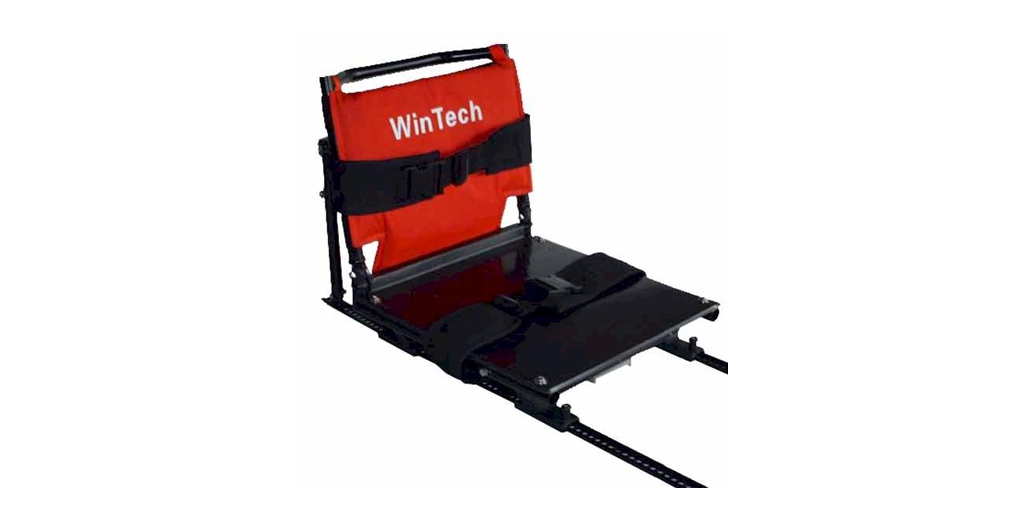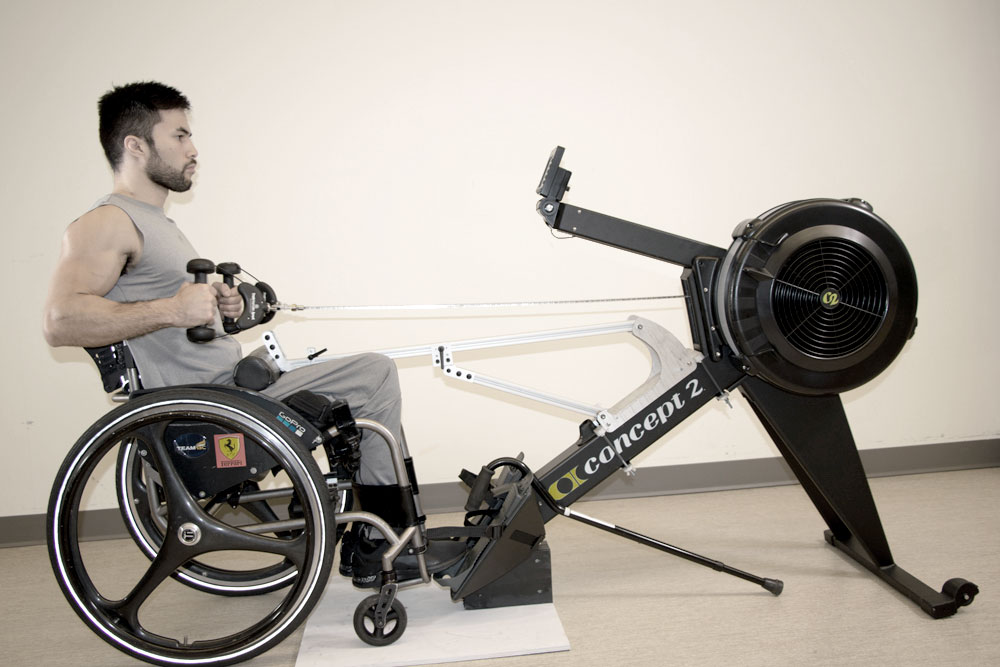We conducted interviews/ focus groups with rowers, coaches, and people with spinal cord injuries who could be potential users of our rowing ergometer adaptations. We got feedback on existing solutions and our preliminary design concepts.
Here’s what we learned:
Fixed Seat

The fixed seat clamps to the rail (the long bar that the seat usually slides on) of a commercially available rowing ergometer. To row, users transfer from their wheelchair, then attach straps across their pelvis and abdomen/chest area for stability (position dependent on the users’ trunk control).
Advantages of the fixed seat:
- this solution mimics how many wheelchair users would row on a real boat. Users can try strapping and make adjustments on land before getting on the water. It’s also a good way to practice the rowing stroke on land.
Disadvantages of the fixed seat:
- users need to transfer from their wheelchair
- mounting the seat can be awkward and it may be difficult for some users to do independently
- once the user is in the seat, the handle and control panel are out of reach
- users may need to bring their own cushion
Splitting the rowing ergometer

The rowing ergometer can be split in half so users can row from their wheelchair, using only the front flywheel part of the ergometer. Straps and binders can be used to provide trunk stability.
Advantages of splitting the ergometer:
- users can row from their wheelchair (no need to transfer, and users can use their own seating)
- users are close to the ergometer so they can reach the handle, access the control panel, and get a full rowing stroke without extending the chain
- no extra equipment is required
Disadvantages of splitting the ergometer:
- set up may be challenging , and may be difficult for some users to do independently
- the ergometer may move around during hard rowing. (Note-weights can be placed on the feet of the flywheel to prevent it moving.)
- the abdominal binder provides limited trunk stability
Our Design Solution

Information gathered from stakeholders was used to iteratively create and test several prototypes. The final design includes an adapter that mounts to the Concept 2 split erg. Support for the user is provided via a lever-controlled lap pad. Depending on the trunk control of the user, the adapter can be used with the lap pad alone, with an abdominal binder, or a chest pad add-on. The adapter is fully adjustable and can accommodate a wide range of different sizes of users. The system can be used with a variety of commercially available accessories, including different handles, harnesses, grips, and gloves. See Rowing Solutions for more details